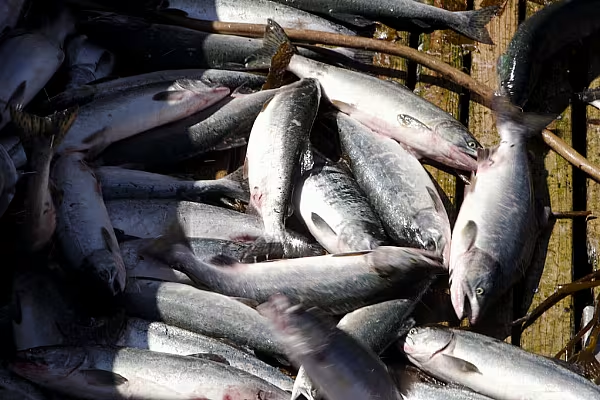DNA bar-coding of more than 1,400 Marine Stewardship Council (MSC) labelled products has indicated that less than 1% were mislabelled, compared with a reported average global seafood mislabelling rate of 30%.
These results, published in the journal Current Biology, suggest that MSC’s eco-labelling and Chain of Custody programme is an effective deterrent for systematic and deliberate species substitution and fraud.
The MSC is a global not-for-profit organisation that sets a benchmark for sustainable fishing and traceable supply chains.
If fisheries and supply chain companies get certified, they can use the MSC’s blue label on products in stores, on fresh-fish counters, and on restaurant menus.
Species Identification
“There is widespread concern over the vulnerability of seafood supply chains to deliberate species mislabelling and fraud. In the past, this has included some of the most-loved species, such as cod, being substituted by farmed catfish, which can seriously undermine consumer trust and efforts to maintain sustainable fisheries,” said Jaco Barendse of the Marine Stewardship Council and lead author on the paper.
DNA methods have been widely used to detect species mislabelling, and a recent meta-analysis of 4,500 seafood product tests from 51 peer-reviewed publications found an average of 30% were not the species stated on the label or menu.
In the present study – the largest and most comprehensive assessment of MSC-labelled products – MSC worked with laboratories of the TRACE Wildlife Forensics Network and SASA’s (Science and Advice for Scottish Agriculture) Wildlife DNA Forensic unit to employ DNA bar-coding to identify the species in 1,402 MSC-certified fish products from 18 countries.
They found that 1,389 were labelled correctly and 13 were not. This represents a total rate of less than 1% (0.92) of species being mislabelled, in contrast to the global average of 30%.
Mislabelled products were found in fresh and frozen pre-packed goods, as well as in restaurants, mainly in Western Europe, with one case in the USA.
All cases of mislabelling were identified in whitefish (cods, hakes, hoki) and flatfish products.
Mislabelling Or Fraud?
There are many reasons that mislabelling may occur. Unintentional mislabelling can result from misidentification of species when the fish is caught, mix-ups during processing, or ambiguities in product naming, such as the use of catch-all trade names such as ‘snapper’ or ‘skate’.
Fraud, on the other hand, occurs when there is intentional substitution, mainly for financial gain. This is typically when a higher-value species is substituted with one of lower value.
Fraud may also arise when species from unsustainable or illegal fisheries gain access to the market as legally caught fish.
While DNA testing can identify cases of species substitution, on its own, it cannot confirm whether this was fraud.
To do this, it is necessary to trace the product’s movement through the supply chain to identify the exact step where the issue occurred.
Chain Of Custody
The MSC’s Chain of Custody certification requires that every distributor, processor and retailer trading in certified seafood has a documented trace-back system that maintains separation between certified and non-certified seafood, and correctly identifies MSC products at every step.
For the 13 mislabelled products, records were obtained from each company at each step in the supply chain.
Trace-backs revealed that only two mislabelled samples could be confirmed as intentional substitutions with species of non-certified origin.
MSC-certified products can command higher prices and better market access than non-certified products, therefore, these substitutions were likely to be fraudulent.
Those responsible for the substitutions had their MSC certificates suspended.
There were other instances where substitutions inadvertently occurred at the point of capture or during onboard processing – likely due to misidentification between closely related, similar-looking species that co-occur in the catch. There was no discernible financial motive.
"The use of DNA tools to detect substitution in the fish supply chain is well documented, but, until now, has essentially revealed a depressing story," said Rob Ogden of TRACE Wildlife Forensics Network and the University of Edinburgh.
"Our research flips this on its head and demonstrates how we can apply similar technology to validate the success of eco-labels in traceable, sustainable fishing," added Ogden.
Next Steps
MSC certificates apply only to fish stocks and fisheries, and not to entire species.
Although MSC Chain of Custody Certification requires separation of MSC and non-MSC certified products, there remains a risk for possible deliberate substitution between certified sustainable fish and other fish of the same species.
Francis Neat, MSC's head of strategic research, said, "While we can get a good indication of whether species-level substitution is taking place, using DNA bar-coding and trace-backs, the future for the MSC is to invest in state-of-the-art, next-generation gene sequencing and isotopic and trace element profiling.
"This will make it possible to determine which stock a fish product came from, in addition to whether it is the species mentioned on the packaging," added Neat.
© 2019 European Supermarket Magazine – your source for the latest retail news. Sponsored content. Click subscribe to sign up to ESM: European Supermarket Magazine.














